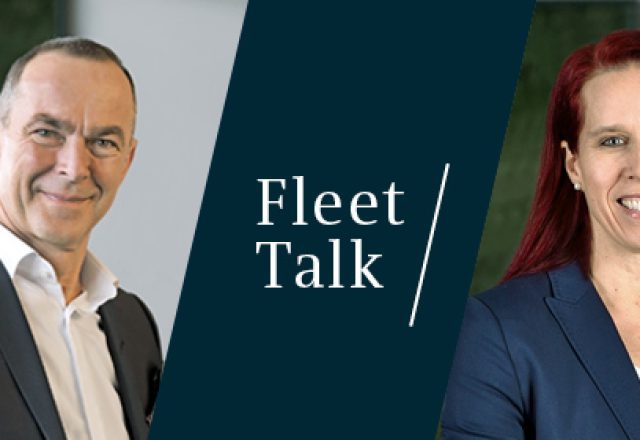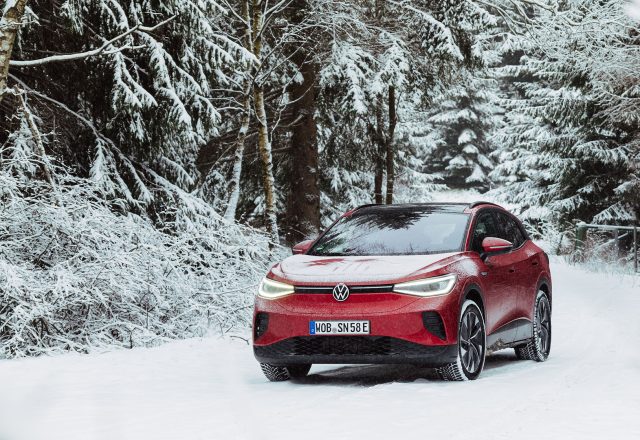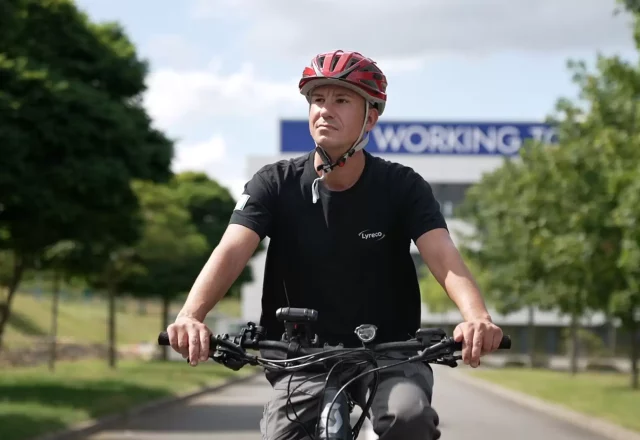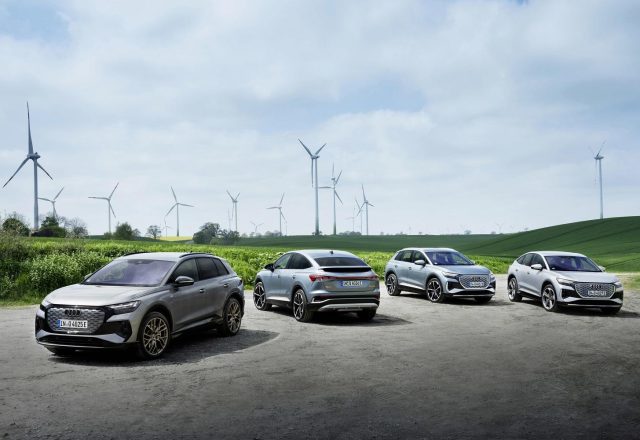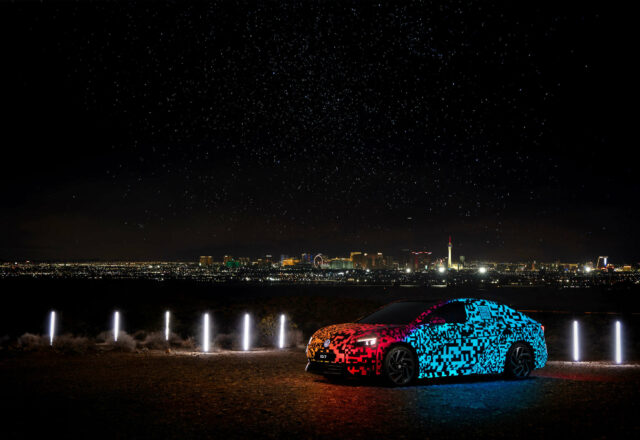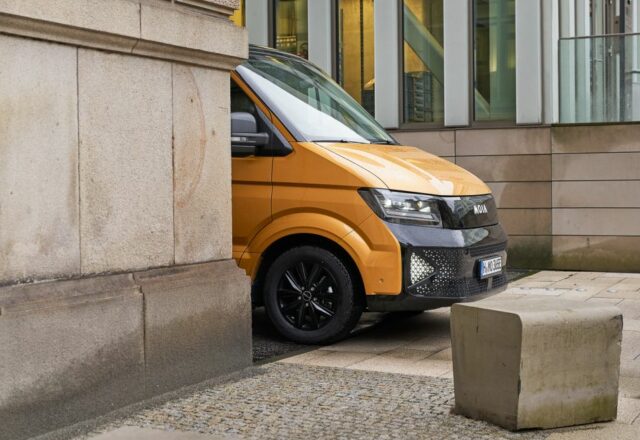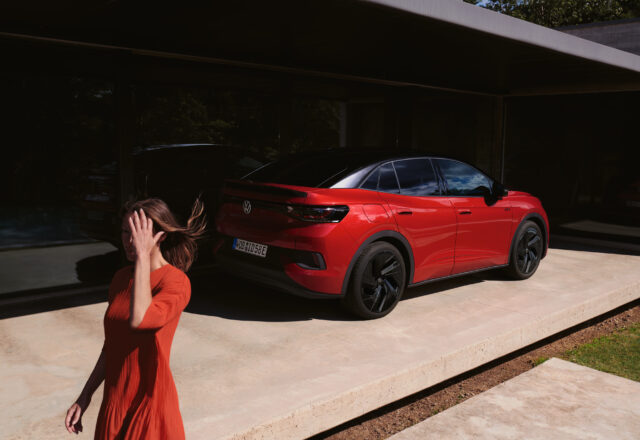“… not only is the product itself critical – rather the entire ecosystem around the car.” Interview with Markus Duesmann, CEO and Board of Management Member for Product Lines, AUDI AG

Audi is playing a major role in the Volkswagen Group in successfully creating the future of electric mobility. In the second part of our interview with Markus Duesmann, CEO and Board of Management Member for Product Lines at AUDI AG, read about what really matters when it comes to the transformation towards electric mobility.
What is your wish for the transformation of the automotive industry? What role do you play as CEO of Audi?
My focus is on technology clarity. In terms of efficiency, electric mobility is by far the most efficient way to achieve decarbonisation. We therefore have to focus our strengths on a drive type and the corresponding infrastructure. After all, we have no time to lose – climate change will not brook delay.
Apart from the charging infrastructure, many customers still have concerns regarding the range of electric cars. The buzzword here is “range anxiety”. Is this concern justified?
The electric car has clearly come a long way and is absolutely ideal for everyday use. Take the Q4 e-tron with rear-wheel drive, for example, (editor’s note: power consumption in kWh/100 km (NEDC): combined 18.3-15.0; CO₂ emissions in g/km: combined 0; efficiency class: A+++)¹⁾, which has a range of up to 528 kilometres (according to WLTP). Or the Audi A6 e-tron concept vehicle (editor’s note: this concept vehicle is not available as a production model), which has a range of about 700 kilometres or more (according to WLTP) and in the past year has provided a clear glimpse of our Premium Platform Electric. In my view, however, the topic will become less important in general with the development of a comprehensive charging infrastructure.
Which ecosystem are you planning in relation to the Audi e-models?
With the transformation to electric mobility and automated driving, what matters more than ever is not only the product itself – rather the entire ecosystem around the car. This increases the number of customer touch points exponentially – and this is where we are focusing our attention. As a first step, this means that we will make electric mobility more attractive overall, for example with our offers in relation to charging. The ecosystem is likely to include services and experience offers in many other areas of life outside of pure mobility.
Which digital offers are especially interesting for Audi customers?
Digitalisation gives us the opportunity to adapt the car even more effectively to the individual needs of drivers – from a personalised user journey to individually bookable services through to personal profiles in the car. An example of this are our functions on demand, in other words functions that customers can order additionally even after they have purchased the car. Such upgrades, for example in the area of “light” or “navigation”, are then simply installed over the air.

“Studien zeigen, dass viele Autofahrende bestimmte Situationen im Straßenverkehr als belastend empfinden. In selbstfahrenden Autos könnten sie wählen.”
Markus Duesmann
Vorsitzender des Vorstands und Vorstand für Baureihen, AUDI AG
The century of the combustion engine is coming to an end – yet many company fleets continue to rely on combustion engine vehicles at present. How long more will you keep classical diesel and petrol engines in your portfolio?
We have made a decision to successively discontinue production of our final combustion engine models in 2033. And we want to make this phase-out as smooth as possible for our customers. We are therefore continuing to put our heart and soul into enhancing our combustion engine models to achieve greater efficiency and performance. We will thus have a highly attractive range of options for business and fleet customers for quite some time yet. The development of the final combustion engine generation is already in full swing.
What does that mean specifically for the popular Audi A4 and Audi A6 company cars?
A successor model featuring a combustion engine will be launched once more for both cars in the coming years. We will leverage the best possible potential to optimise performance and efficiency and also enhance them consistently in line with the requirements of customers in the fleet sector. The next new generation may then already be fully electric.
You presented an extremely powerful, all-electric road-going model from Audi Sport …
… You mean the Audi RS e-tron GT (editor’s note: power consumption in kWh/100 km (NEDC): combined 20.2-19.3; CO₂ emissions in g/km: combined 0; efficiency class: A+++)¹⁾.
Which customers are you targeting with this model?
The vehicle marks the beginning of a new era – at Audi we refer to it as the electric spearhead. Even if the Gran Turismo meets a relatively pointed target group, it is definitely a car for car lovers, who believe in an electric future and treasure the typical Audi design, quality and appearance from the inside out combined with everyday practicality.
Keyword Autonomous driving – virtually all car manufacturers have made wholehearted promises in this respect in the past, yet there are still many questions to be answered before it becomes a reality. When can/will we actually be able to drive autonomously.
It is difficult if not impossible to commit to a specific year at this stage. The automation levels we see presently on the market will gradually be enhanced in certain situations or areas. On a wider scale, cars will certainly be able to navigate certain road sections autonomously by the second half of this decade. I take that as read, and that is what we are working towards. The technology needed is extremely complex.
Many people really enjoy driving cars. Why is autonomous driving desirable at all?
I think it is very much about having the choice. Drivers have the possibility to decide themselves how they want to get from A to B. Studies show that many drivers find certain traffic situations stressful and for many it is also simply a waste of time. With autonomous cars they have the choice. This offers significant advantages for company car drivers in particular. Anyone who regularly drives long distances or on the motorway could benefit enormously.
The prerequisite for a smart car is without doubt a standard operating system, which is then used in all Group models – when and in which vehicle will it be used for the first time?
CARIAD is developing the E³ 2.0 software platform for all Group vehicles. It will provide the basis for a completely new digital ecosystem, new data-based business models and autonomous driving. It will be used in up to 40 million vehicles in the Group, by 2030. As early as next year, we will be using the Premium E³ 1.2 software platform, which will enable us to take a great leap forward.
Mr Duesmann, what are your personal goals for the coming years? What drives you? Where is Audi’s journey leading?
As an engineer, I am firmly convinced that we can solve many problems in the world with technology. In this respect, I see that the automotive industry can contribute enormously to the battle against climate change through technical innovations. The aspiration for Audi, and also for me personally, is that we can offer people the freedom of individual mobility in an era of climate change, too. It is an incredible opportunity for us!
Read why the future of mobility is electric in the first part of our interview with Markus Duesmann.
Vita
- Markus Duesmann was born on 23 June 1969 in Heek, North Rhine-Westphalia. In 1991, he completed his studies of mechanical engineering at Muenster University of Applied Sciences with a degree in engineering.
- He began his career in 1992 as a design engineer for a V12 series-production engine at Mercedes-Benz in Stuttgart. In 1995, he moved to the development service provider FEV GmbH in Aachen, where he held various positions, the last of which was head of the engine mechanics division.
- In 2004, he took over the position of main department manager for new diesel engines at DaimlerChrysler AG in Stuttgart, and in 2005 became head of Formula 1 development at Mercedes-Benz in Brixworth in the United Kingdom.
- In 2007, Markus Duesmann moved to BMW AG as head of Formula 1 powertrain. After holding several responsible positions at that company, he was Board of Management Member for Purchasing and Supplier Network at BMW AG from October 2016 until July 2018.
- The Supervisory Board of AUDI AG appointed Markus Duesmann as Chairman of the Board of Management of AUDI AG effective 1 April 2020. Since then, he has also had Board of Management responsibility for Volkswagen Group Research and Development. Additionally he is entrusted with responsibility for the China business of AUDI AG and with Board of Management responsibility for Product Lines at AUDI AG.
1)The specified fuel consumption and emission data have been determined according to the measurement procedures prescribed by law. Since 1st September 2017, certain new vehicles are already being type-approved according to the Worldwide Harmonized Light Vehicles Test Procedure (WLTP), a more realistic test procedure for measuring fuel consumption and CO2 emissions. Starting on September 1st 2018, the New European Driving Cycle (NEDC) will be replaced by the WLTP in stages. Owing to the more realistic test conditions, the fuel consumption and CO2 emissions measured according to the WLTP will, in many cases, be higher than those measured according to the NEDC. Therefore, the usage of CO2 emission values measured according to WLTP for vehicle taxation from 1st September 2018 on can cause changes in this regards as well. For further information on the differences between the WLTP and NEDC, please visit www.audi.de/wltp.
We are currently still required by law to state the NEDC figures. In the case of new vehicles which have been type-approved according to the WLTP, the NEDC figures are derived from the WLTP data. It is possible to specify the WLTP figures voluntarily in addition until such time as this is required by law. In cases where the NEDC figures are specified as value ranges, these do not refer to a particular individual vehicle and do not constitute part of the sales offering. They are intended exclusively as a means of comparison between different vehicle types. Additional equipment and accessories (e.g. add-on parts, different tire formats, etc.) may change the relevant vehicle parameters, such as weight, rolling resistance and aerodynamics, and, in conjunction with weather and traffic conditions and individual driving style, may affect fuel consumption, electrical power consumption, CO2 emissions and the performance figures for the vehicle.
Further information on official fuel consumption figures and the official specific CO2 emissions of new passenger cars can be found in the “Guide on the fuel economy, CO2 emissions and power consumption of new passenger car models”, which is available free of charge at all sales dealerships and from DAT Deutsche Automobil Treuhand GmbH, Hellmuth-Hirth-Str. 1, D-73760 Ostfildern, Germany and at www.dat.de.
Status: 23.06.2022
© Volkswagen AG

